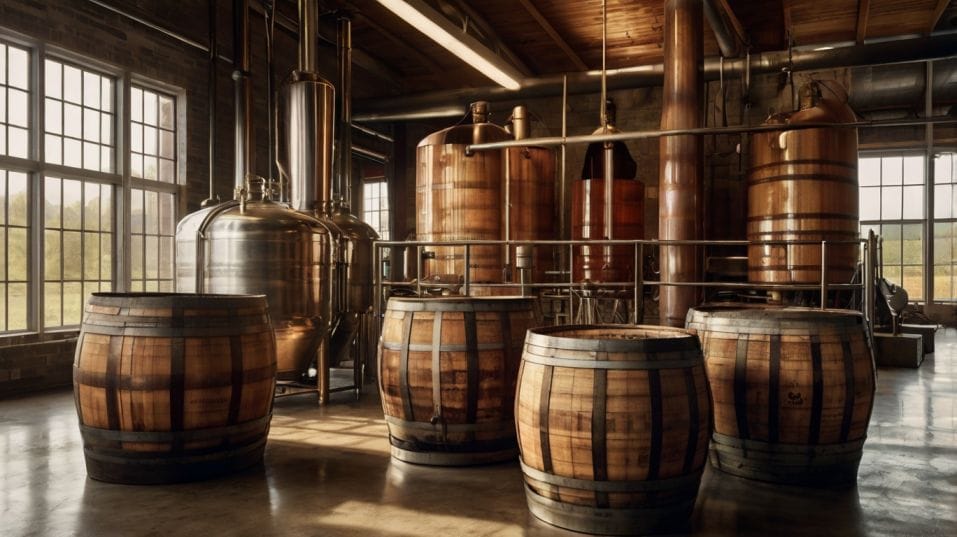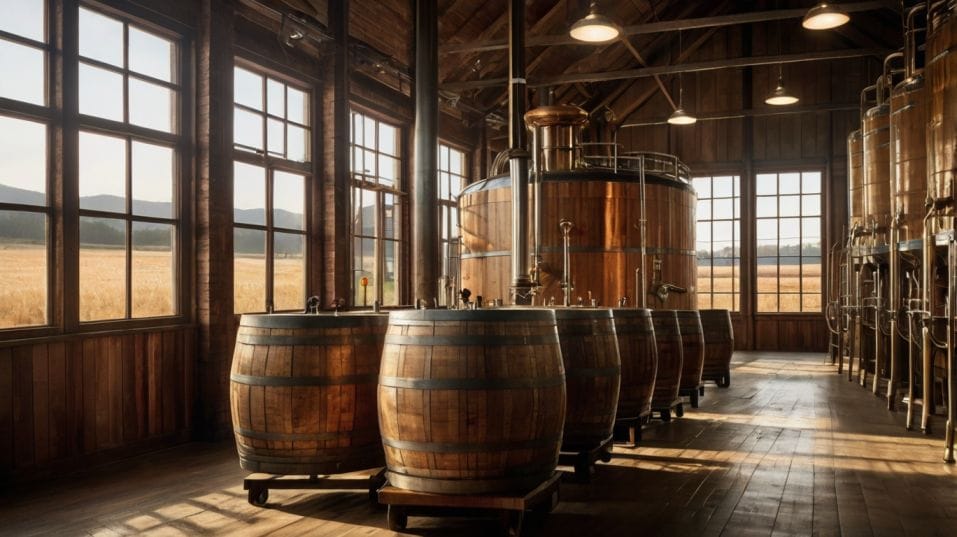Regional Terroir in Whiskey (Yes, It Exists)
Think terroir is just for wine? Think again. Discover how geography shapes whiskey flavor—and how to taste and collect with confidence.

What if whiskey could speak—and the land was its voice? Terroir isn’t just for wine lovers. It shapes your whiskey too. From grain to glass, regional character leaves a real, tasteable mark.
If you’re just starting your whiskey journey, don’t settle for sameness. Learn to spot the earthy, vibrant signs of place in every pour. Once you do, you’ll never drink whiskey the same way again.
Terroir Isn’t Fancy Talk. It’s Flavor at the Source.
Let’s be clear: terroir isn’t about elitism or snobbery. It’s not about naming obscure grain strains or rattling off regional pH levels.
It’s about understanding why one whiskey hits your palate with dark, brooding spice and another sings with floral citrus—and why those differences are real, not random.
Terroir is what connects your glass to the land. It’s the grain in the field, the water in the stream, the microflora in the distillery, the climate in the warehouse. It’s the cumulative imprint of environment—captured, distilled, aged, and poured.
Ignore terroir, and you’re drinking blind. Learn to spot it, and you’re tasting with purpose.
Grain: The Foundation of Flavor
Whiskey starts in the ground. Not in a barrel, not in a distillery. In dirt. Grain isn't a background player—it’s the blueprint. Rye, corn, wheat, barley—each responds to climate, soil, and altitude.
A rye grown in Alberta’s cold, dry plains delivers more spice and tannin than the softer, fruitier rye from Virginia’s temperate valleys.
Corn from Nebraska isn’t the same as corn from southern Mexico. Barley grown in Scotland’s Orkney Islands isn’t even close to its cousins in Oregon.
The way a grain metabolizes sugar, holds protein, or releases oils varies by where it was grown. You can taste it, if you’re paying attention.
Most commercial whiskeys won’t tell you where their grain was sourced. But that doesn’t mean it doesn’t matter. In fact, small distilleries that highlight local grain are often your best entry point into terroir-focused tasting.
You don’t need to memorize soil types. Just taste broadly. Line up whiskeys made from similar mash bills across different regions and taste what the grain is trying to say.

Fermentation: Microbes Know the Zip Code
Even before the spirit hits the still, fermentation starts shaping flavor. And regional terroir is all over it.
Natural yeasts, wild microflora, ambient temperatures—these influence how sugars convert into alcohol and how esters, acids, and phenols develop.
It’s chemistry, but it’s also culture. Literally. A fermenter in Oaxaca works differently from one in Kansas. The same yeast strain can behave wildly differently depending on its environment. That’s regional.
Larger distilleries often use lab-cultured yeasts to maintain consistency, which can smooth out terroir’s edge. But some of the best-tasting craft whiskeys lean into wild or open fermentations. They let the local biome do its work.
If you're tasting a whiskey that brims with odd, vibrant notes—think overripe fruit, leather, hay—it may be terroir through fermentation speaking loud and clear.
Water: The Invisible Hand
Water matters, and not just because it makes up more than half your pour. It influences fermentation, mashing, and barrel proof. But its real impact shows up long before dilution.
Hard vs. soft water. Iron-rich or lime-filtered. Spring water vs. treated municipal water. These differences affect everything from mouthfeel to fermentation health.
Look at Kentucky—its famed limestone-filtered water is prized for its low iron content and calcium-rich profile. That isn’t hype. It helps yeast thrive and contributes to the signature mellow, sweet character found in many bourbons.
Compare that to the peaty, mineral-heavy water pulled from the Scottish Highlands or Islay bogs. Even before the spirit touches smoke, that water leaves a fingerprint.
Don’t overthink it—but don’t dismiss it either. The water source isn't usually on the label, but distilleries proud of their terroir often talk about it. Listen.
Distillation Style Meets Regional Intent
Still design matters. So does how it's run. But a still is just a tool—what really defines its output is how it’s used to express flavor.
Distillers in cold climates may run their stills longer to extract more esters. Coastal distillers may aim to retain briney, saline notes. Some chase heavy, oily new make.
Others go for light and clean. These choices aren’t random—they’re influenced by what the distiller knows the environment will do during aging.
A heavier new make might age better in cooler climates. A brighter, fruitier one might shine in high-heat maturation zones. Distillation isn’t separate from terroir—it responds to it.
Maturation: Where Terroir Hits the Gas Pedal
This is where regionality gets loud. Aging whiskey isn’t passive. It’s a conversation between spirit, wood, and climate.
A barrel aging in Texas will breathe faster, evaporate more, and develop bold, caramelized notes quickly due to extreme temperature swings.
In contrast, a whiskey aging in a cool, damp Scottish dunnage warehouse may take twice as long to develop those same flavors—but arrive at a deeper subtlety and balance.
Even within a single region, warehouse location, orientation, and altitude make a difference. That’s why seasoned collectors talk about barrel floors, rickhouse positions, and even seasonality during aging.
If you're collecting, this matters. A hot-climate whiskey might taste rich and developed after four years.
That doesn’t make a 12-year-old Speyside bottle better—just different. Smart collectors and drinkers don’t chase numbers—they chase context.
Regional Profiles: What to Watch For
Understanding terroir means grounding your expectations in geography. Every region leaves distinct fingerprints on the spirit—from grain and water to warehouse conditions.
Here are a few places where terroir shows up most clearly, helping you train your palate to recognize the signs.
Islay, Scotland
Peated barley, coastal wind, sea spray. Even unpeated expressions carry maritime salinity. That’s terroir.
Central Kentucky, USA
Corn-based mash bills, limestone water, seasonal heat swings. Expect sweet vanilla, spice, and rich oak.
Tasmania, Australia
Cool climate, oceanic influence, variable humidity. Fruity, structured, and layered whiskeys—even at younger ages.
India (e.g., Goa)
Tropical heat accelerates aging. Think explosive flavors—mango, sandalwood, heavy spice. Age statements lie here; taste speaks louder.
These are starting points. Real tasting means testing these theories with your own palate.
Tasting With Terroir in Mind
So how do you actually use this knowledge? Start horizontal tasting. Same mash bills, different regions. Same distillery, different barrel locations. Compare. Contrast. Ask yourself: What’s the land saying here?
Don’t rush. Sip slow. Forget the proof and the price tag for a minute. Focus on what flavors emerge, not just how strong they are.
When you collect, start noting barrel origin, aging climate, warehouse details. Those little clues give you an edge others miss. The more you link flavor to geography, the more fluent you become in whiskey.
Final Thoughts: Drink Like It’s a Map
Whiskey isn’t just a liquid—it’s a map. A distilled story of wind, soil, wood, and time. Regional terroir exists, and it’s not some abstract tasting note.
It’s real. It’s practical. It’s the difference between collecting with confidence and just buying what’s trendy.
You want to taste better? Start seeking out whiskeys that reflect where they come from. You want to collect smarter? Go beyond age and ABV—look at climate, grain source, and maturation style.
So grab two bottles from two different regions. Same grain. Same age. Different origin. Pour them. Taste them. Let the land speak through the glass.
Drink with purpose. Collect with context. Build a palate that listens. Your whiskey journey doesn’t start at the label. It starts at the roots.




